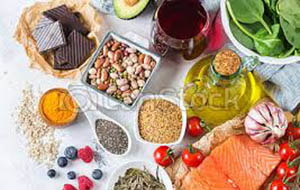(Powerful anti-viral properties of this unique nutrient)
By: Cat Ebeling, RN, MSN-PHN
Posted by: Dr. Robert Macchione
With the rapid spread of Covid-19 around the world, along with the dramatic and scary news stories, it seems everyone is scrambling to
grab supplements to boost their immune systems. While nothing takes the place of a healthy diet that lowers inflammation in your body, a good night’s sleep, stress reduction, exercise, and vitamin D production in your skin from sun exposure—some supplements can definitely be helpful as well.
Once the SARS-CoV-2 or Coronavirus gets inside the human respiratory tract, it infects and multiplies in the cells lining the airways and lungs. This kicks the body’s immune system into action. In most people, the immune system does its work, then recedes and the patient recovers.
Normally, an immune response which
causes inflammation is a normal and good thing in the fight against a pathogen or an injury. However, with this coronavirus, the
Acute Respiratory Distress Syndrome that occurs in some people, happens as a result of a
dysfunctional immune response to the presence of the virus. The uncontrolled immune response triggers an overproduction of immune cells and their signaling molecules which leads to a
‘cytokine storm’. This cytokine storm is generally what causes the severe and potentially fatal symptoms of severe pneumonia and breathing difficulties with a Covid19 infection.
So it’s more about having a healthy immune system overall and reducing inflammation in the body, because if the body is already overridden with inflammation, leaky gut, Diabetes, obesity, and other health problems, it’s possible this can contribute to the cytokine storm that’s being seen in some patients.
There are several supplements that actually help to
strengthen the immune system and reduce inflammation, without overstimulating the immune system. One of the top nutrients for this is
Quercetin.
What is
Quercetin?. It is a potent anti-inflammatory and antiviral substance
found in certain foods, including red onions and apples. Many people take Quercetin in the fall and spring to help their allergies to tree and weed pollen. Lately research has been looking into Quercetin as a
powerful agent to fight against SARS-Covid19. Quercetin has been shown in many studies to have fairly broad anti-viral properties against most viruses.
Quercetin is considered a bioflavonoid. Quercetin is found in the
highest concentrations in red onions, berries, red wine, green tea, buckwheat, and apples.
Quercetin is now also undergoing trials in China for its effectiveness against Covid19. In a recent analysis published by the University of Tennessee and Oak Ridge National Labs, they used high-powered computer modeling to look at
which compounds or supplements might best prevent the coronavirus from binding to our cells.
This is key, because this is how this virus gets into to our bodies and starts reproducing. It enters our bodies through nasal passages, mouth, eyes, or respiratory passages. Once it binds to a cell, it finds its way into the cell, starts reproducing like crazy, and takes over the respiratory system, especially the lungs.
The coronavirus uses the ACE2 or Angiotensin Converting Enzyme receptor in our bodies to enter the cells. This is important too, because ACE2 receptors have to do with
regulating our blood pressure—I’ll talk more about that below.
The analysis from Tennessee looked at several different compounds and nutrients to see which ones worked best at interfering with the virus’s ability to attach to a cell and get inside to do its damage.
One of the top 5 virus-fighting natural compounds is Quercetin.
Quercetin is a
natural supplement that has other big benefits including lessening reactions to allergies, as well as fighting aging and free radicals. Well worth it to start taking since it has
multiple benefits for our health. According to most research, the usual dose is 500mg to 1,000 mg a day. Quercetin is often compounded with a digestive enzyme like bromelain, plus Vitamin C, to improve absorption. All good things.
Quercetin is also inexpensive, especially compared to some of the pharmaceutical grade antiviral drugs that are being used now. This broad-spectrum antiviral supplement has already proven successful for treating the Ebola and Zika viruses, according to Dr. Michel Chrétien, a researcher at the Clinical Research Institute of Montreal.
Does it work for sure? It’s too early for standard clinical trials to show positive proof, but the circumstantial evidence is strong in favor of its
anti-inflammatory and antiviral capabilities. The best thing about quercetin is, even without clinical trials, we know that quercetin will not harm you, or cause your immune system to overreact. Including quercetin in your Covid19 weapons seems like a wise idea, along with these other practices as well:

Get good sleep
Poor sleep increases the risk of infectious illness. One study found that getting less than 5 hours of sleep over the course of a week,
can increase the chances of catching a cold by 350%. Let’s apply this to Covid19 as well. Also, important to note is that lack of sleep can increase inflammatory levels in the body, creating higher risk for a cytokine storm. If you are having trouble sleeping, a small dose of melatonin at night may help you sleep better and keep your immune system strong.
Manage your stress
It’s no secret that stress definitely disrupts our immune function and
increases our levels of inflammation, making us far more susceptible to getting seriously ill. Stop reading the news, follow precautions and find something relaxing to do—meditation, breathing exercises and exercising outdoors all go a long way to manage stress, reduce anxiety and strengthen your immune system.
Take Zinc
Zinc has been proven to reduce the activity of coronavirus and may prevent its entry into our cells while reducing its power. Zinc has proven powerful in
fighting off regular influenza and the common cold as well. The suggested dosage for zinc is about 15mg – 30mg daily.
Vitamin C
Vitamin C has shown great promise in
inhibiting inflammatory reactions and is thought to be very effective against Covid19 virus as well. Several clinical trials have found that vitamin C shortens the frequency, duration and severity of the virus that causes the common cold (a type of corona virus) and the incidence of pneumonia. Vitamin C can be taken in reasonably high doses as any excess is washed out of the body. In
Wuhan China, a high dose vitamin C study is actually being conducted against Covid19 right now, but results are not in yet.
This is a brand of
Vitamin C. that seems to be more well absorbed than most types.

Eat Other Immune-Boosting Nutrients:
Other foods to consider including in your diet are garlic, fresh ginger, berries, green tea, and even grass fed butter and organ meat–full of vitamin A and other immune-boosting natural compounds.
One additional note about blood pressure and blood pressure medications involved in Covid19 risk. As I mentioned above, the Covid19 virus attaches to the ACE2 receptor on the cells. A receptor is like a doorway on the cell.
The ACE2 receptor or Angiotensin Converter Enzyme is a natural enzyme involved in the function of regulating our blood pressure. The coronavirus actually hijacks this receptor to get inside our cells. Many people who have high blood pressure take a pharmaceutical medication in the form of ACE2 inhibitors. This is what helps to lower blood pressure.
When the ACE2 receptor is blocked because of blood pressure medications, your body may actually work around this creating more ACE2 receptors. More ACE 2 receptors may mean that more the Covid19 virus can enter cells. This is one reason why those with
high blood pressure may be more at risk for Covid19 infections. The best way to avoid that, is to follow natural solutions to help lower blood pressure, and thereby helping you prevent getting sick from Covid19.
Stay well, be healthy, and remember, a healthy body is the best defense against any disease.
References
https://www.cbc.ca/radio/thecurrent/the-current-for-feb-28-2020-1.5479561/as-coronavirus-spread-speeds-up-montreal-researchers-will-trial-an-anti-viral-treatment-for-covid-19-in-china-1.5480134
https://regenexx.com/blog/coronavirus-episode-9-can-Quercetin-help-covid-19/
https://www.webmd.com/vitamins/ai/ingredientmono-294/Quercetin
https://www.ncbi.nlm.nih.gov/pmc/articles/PMC4808895/
https://jvi.asm.org/content/78/20/11334
https://www.sciencedirect.com/topics/pharmacology-toxicology-and-pharmaceutical-science/quercetin
https://doi.org/10.26434/chemrxiv.11871402.v3



